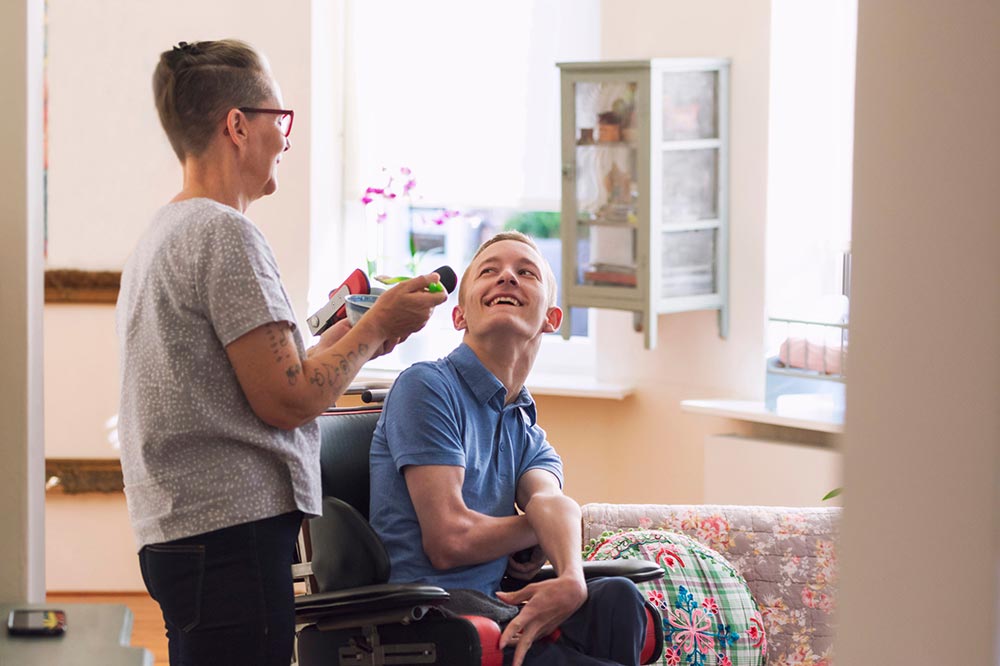Table of Contents
How does a person get ALS?
While the causes of ALS are currently unknown, scientists are studying several possible factors:
Genetics: In 5 to 10 percent of the cases, ALS is hereditary. Most hereditary ALS cases occur when a person inherits a mutated gene from one parent. That person can then pass on the disease to their children.
In the other 90 to 95 percent of cases, ALS occurs in people with no family history of the disorder. Scientists believe these cases result from a combination of genetic and environmental factors.
Environmental factors may include: environmental toxins, chemical imbalances in the body, physical trauma and viral infections. These factors have not been confirmed as causes for ALS and additional studies are needed to determine if they play a role in causing the disease.
In the United States, it is estimated that 20-30,000 people have ALS. The causes of ALS are not completely understood. Although research has shown that genetic factors may play a role in the disease, most people with ALS have no family history of the disorder. The rate of incidence is comparable in all ethnic groups. ALS is found throughout the world and seems to affect slightly more men than women.
Most scientists agree that ALS involves both genetic and environmental factors in its development. Most cases are sporadic (not clearly inherited) but approximately 10% are familial (inherited). About half of those who develop familial ALS will have inherited a gene for the disease from a parent.
One gene known to be involved in some forms of familial ALS is called SOD1 (short for superoxide dismutase 1), which has been identified by researchers at several institutions, including Johns Hopkins University School of Medicine. Hopkins researchers recently found a mutation on this gene in about 1 in 90 patients with sporadic ALS, indicating that SOD1 mutations may account for more cases than previously thought. This finding also provides further evidence that genetic factors contribute to sporadic as well as familial cases of ALS.
What is usually the first sign of ALS?
The first sign of amyotrophic lateral sclerosis (ALS) is typically weakness in one limb or a slurred speech. As the disease progresses and more motor neurons are destroyed, symptoms generally become more severe and may include:
- Difficulty holding the head up or maintaining good posture
- Difficulty walking or doing other movement
- Twitching or cramping of muscles, especially those in the hands and feet
- Weakness in the legs, feet (also called foot drop), or ankles
- Weakness in the hands and difficulties with grip strength
- Weakness in the arms
- Speech, swallowing or breathing problems
How is ALS diagnosed?
Diagnosis of ALS is based on the symptoms present in each individual patient, as well as the results of diagnostic tests.
There are no specific diagnostic tests for ALS. Instead, doctors rely on a number of procedures and tests to arrive at a diagnosis.
Diagnostic procedures may include:
- Physical and neurological exams
- Medical history review
Diagnostic tests may include:
Blood and urine tests – to rule out conditions with similar symptoms
Electromyography (EMG) – a test that records the electrical activity of muscles when they contract or are at rest, in order to detect abnormal nerve-muscle interaction; EMG can confirm ALS and help exclude other disorders that mimic it.
Magnetic resonance imaging (MRI) – a test that uses radio waves and magnets to produce detailed pictures of internal body structures; MRI scans can reveal serious spinal cord lesions such as tumors or trauma as a cause for symptoms.
